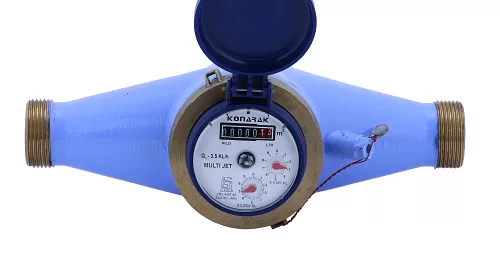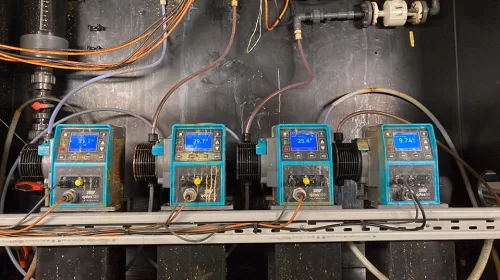By TaKaDu, Israel
Background Hunter Water is a State-Owned Corporation (SOC) providing drinking water, wastewater, and recycled water services to almost 600,000 people in the Lower Hunter region, north of Sydney, Australia. From its earliest days in the 1880s, Hunter Water, like the region it serves, has grown greatly. Today, it manages more than AU$2.5 billion worth of infrastructure, including 10,000 km of water and sewer mains. The utility notes that it is constantly looking for new ways to provide great services, enable good development and be a thought leader. Clear goals for transformation In 2016, Hunter Water developed a new longterm strategy to improve management of infrastructure, enhance customer experience, reduce water losses and become a more resilient organization. As part of this strategy,in 2018 Hunter Waterselected TaKaDu Central Event Management (CEM) system to monitor and assist with reduction of water losses in the area. As Hunter Water forged ahead with its longterm strategic program, including integrating the TaKaDu solution, the utility understood that it needed to adapt its operations. It set clear goals for developing its people, processes and technology – commonly known as PPT transformation. In terms of people, Hunter Water aimed to increase collaboration across business units, foster continual learning and innovation, and, importantly, maintain a clear focus on the customer. In parallel, Hunter Water wanted to develop new processes that would allow for flexibility and resilience in the face of a changing environment. It also aimed to institute new processes that would improve the accuracy and consistency of the network’s various data sources. Regarding technology, Hunter Water wanted to nurture its appetite to take risks in the name of innovation and technology, to adopt new technologies and gain the full benefits of digitization across its operations. Organizationand process changes drive collaboration As a first step in changing its organizational structure, Hunter Water created a core NonRevenue Water (NRW) team, assigning a Business Lead to coordinate all NRW activities. Team members were assigned new roles to manage and operate the TaKaDu CEM solution. The utility’s active leak detection managers were integrated into the NRW team, and new team members were added to develop, deliver and commission new District Metered Areas (DMAs). As part of this, Hunter Water invested in training team members and developing the in-house skills needed to create new DMAs and manage the TaKaDu system. Hunter Water then worked to create a broader and more integrated NRW team by developing processes for input and collaboration from other groups within the organization, including GIS, SCADA, Asset Information, Planning, and Billing. It established new processes and procedures to facilitatethe input of data into the TaKaDu system, address data discrepancies, and process events generated by the system. In parallel, priorities were defined for following up water loss events identified by the TaKaDu system and for targeting leak detection activities. Additionally, Hunter Water introduced new processes to validate asset configuration and populate consistent asset data across business systems. The water utility also refined procedures to standardize the creation of new DMAsas well as specifications for flowmeters and data transfers. Technology and network changes, supported by new procedures As Hunter Water continued to integrate TaKaDu in its network management operations, it redefined DMAs based on best engineering practices. It modified the reflection of their water network throughTaKaDu for smoother data configuration and input and created automated routines to update the TaKaDu system from the live SCADA system.The changes were reinforcedthrough business processes, procedures and templates to ensure consistent data inputs from DMAs into the TaKaDu software. Transformation driven by adoption of TaKaDu At time of writing, three years after beginning to work with the TaKaDu CEM solution, Hunter Water has made great strides towards its goals for transforming its operation and gaining the benefits of a digital network. For example, according to the National Performance Report for 2019-2020, water leakage in the Hunter Water supply area is down by 34% compared to 2015-2016. TaKaDu is used to monitor areas and to prioritize leak detection work across the water network, providing Hunter Water with a management tool that complements the SCADA alarm and monitoring system. As a browser-based solution, TaKaDu reports and insights are always available to anyone in the organization, no matter where they are. With 24/7 monitoring and a dedicated, automated system collecting and analyzing all the data,Hunter Water now better understands the performance of its DMAsand Pressure Management Areas (PMAs). Dean Palmer, NRW Business Lead, noted that “TaKaDu is enabling us to transition from a leak detection approach based on suburb and rate of rise to a more effective and efficient method based on DMAs and water balancing. We also see that TaKaDu has the potential to help us reduce and control non-revenue water. It adds real value to our asset management system.” Next steps: more integrations, more control Building on its success so far with implementing TaKaDu and developing its people, processes and technology, Hunter Water is now gearing up for the next steps in its transformation strategy. It plans to expand DMA coverage by adding newly established areas into the system, validating existing PMAs and adding new ones. Additionally, Hunter Water plans to monitor other attributes of its water and sewerage network, such as pressure, chlorine levels, temperature, and vibrations in the pipes. Hunter Water already requires that all stand pipes (portable hydrants for filling water carts and tankers) be metered, enabling it to charge for external water use. Going forward, Hunter Water willinvestigate importing the data from these smart standpipes into TaKaDu, to monitor external consumption and reduce unauthorized water usage. The water utility also plans to investigate integrating TaKaDu with additional enterprise systems. It is currently looking at integrating TaKaDu with billing data to enable mass balancing across its network. Hunter Water will also look intolinking TaKaDu to its new Operation and Maintenance system once it has been commissioned.





